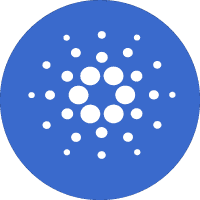When Will Staked ETH Be Unlocked?

When Will Staked ETH Be Unlocked?
In the dynamic and ever-evolving world of cryptocurrencies, few events are as eagerly anticipated as the unlocking of staked ETH. Ethereum, one of the leading blockchain platforms, offers staking as a means for participants to support network operations while earning rewards. At the forefront of this innovation, the question of when staked ETH can be unlocked captures the curiosity of many enthusiasts and investors. As we unravel this topic, we will delve into the history, mechanisms, and potential future landscape of Ethereum staking.
Concept Introduction
Ethereum staking is an integral component of the Ethereum 2.0 upgrade, transitioning from a proof-of-work (PoW) to a proof-of-stake (PoS) consensus mechanism. In staking, participants lock their ETH to support the network's operations, validating transactions and securing the platform. This process not only maintains the integrity of the blockchain but also decentralizes power, allowing multiple nodes to confirm transactions.
Stakers receive rewards in the form of additional ETH, incentivizing more participants to engage in this eco-friendly and efficient mechanism. However, with this staking comes a critical question: when and how will participants be able to unlock their staked ETH?
Historical Background or Origin
The journey towards Ethereum 2.0 has been years in the making, beginning with its initial phase, known as the Beacon Chain, launched in December 2020. This marked the inception of staking, allowing participants to commit their ETH in exchange for rewards. Over time, this staking mechanism evolved, enhancing the security and reliability of the Ethereum network.
Within this framework, stakers committed their ETH with the understanding that it would be locked until further developments facilitate withdrawal. The anticipation surrounding the unlocking event is rooted in the desire for liquidity, enabling participants to access their funds while still contributing to the Ethereum ecosystem.
Working Mechanism
To comprehend the unlocking of staked ETH, it's crucial to understand the underlying mechanisms of Ethereum 2.0. The network is partitioned into several phases, each building on the previous to enhance scalability, security, and sustainability.
The possibility of unlocking staked ETH is tied to the completion of Ethereum 2.0's later phases, notably the implementation of the shard chains. As these developments progress, the infrastructure will allow the network to manage the complexities of ETH withdrawals alongside other optimizations.
Benefits or Advantages
Unlocking staked ETH will present several advantages for the Ethereum community. First and foremost, it introduces flexibility, allowing stakers to access their funds while continuing to earn rewards. This liquidity will attract more participants to the Ethereum network, bolstering decentralization and security.
Additionally, the unlocking of staked ETH is expected to stabilize the market by increasing the circulating supply. This equilibrium can foster investor confidence, potentially mitigating price volatility often associated with sudden asset movements.
Conclusion or Future Outlook
The anticipation surrounding the unlocking of staked ETH is a testament to Ethereum's critical role in the crypto landscape. As the network progresses towards its Ethereum 2.0 vision, the steps taken will redefine how participants engage with staking.
While the exact timeline for this unlocking event remains a subject of speculation, its potential impact on the broader crypto market is undeniable. As Ethereum continues to advance and decentralize its operations, stakers and investors alike have much to look forward to in the evolving landscape of blockchain technology.
Stay informed and prepared for the upcoming changes within the Ethereum ecosystem. Keep your eyes on staked ETH, as its unlocking will be a pivotal moment that shapes the future trajectory of this influential blockchain platform.
Latest articles
See moreAbout author
I'm CryptoBridge Communicator, a bilingual builder bridging the crypto world between English and German. I excel at dissecting the economic models of DeFi protocols, the liquidity challenges in the NFT market, and the impact of EU digital wallet regulations on the industry in both English and German. Having participated in a cross-border blockchain payment project for banks in Frankfurt and explored community governance and incentive mechanisms of DAO organizations in New York, I'll showcase the differences and commonalities of blockchain technology in the European and American markets from a bilingual perspective.



















